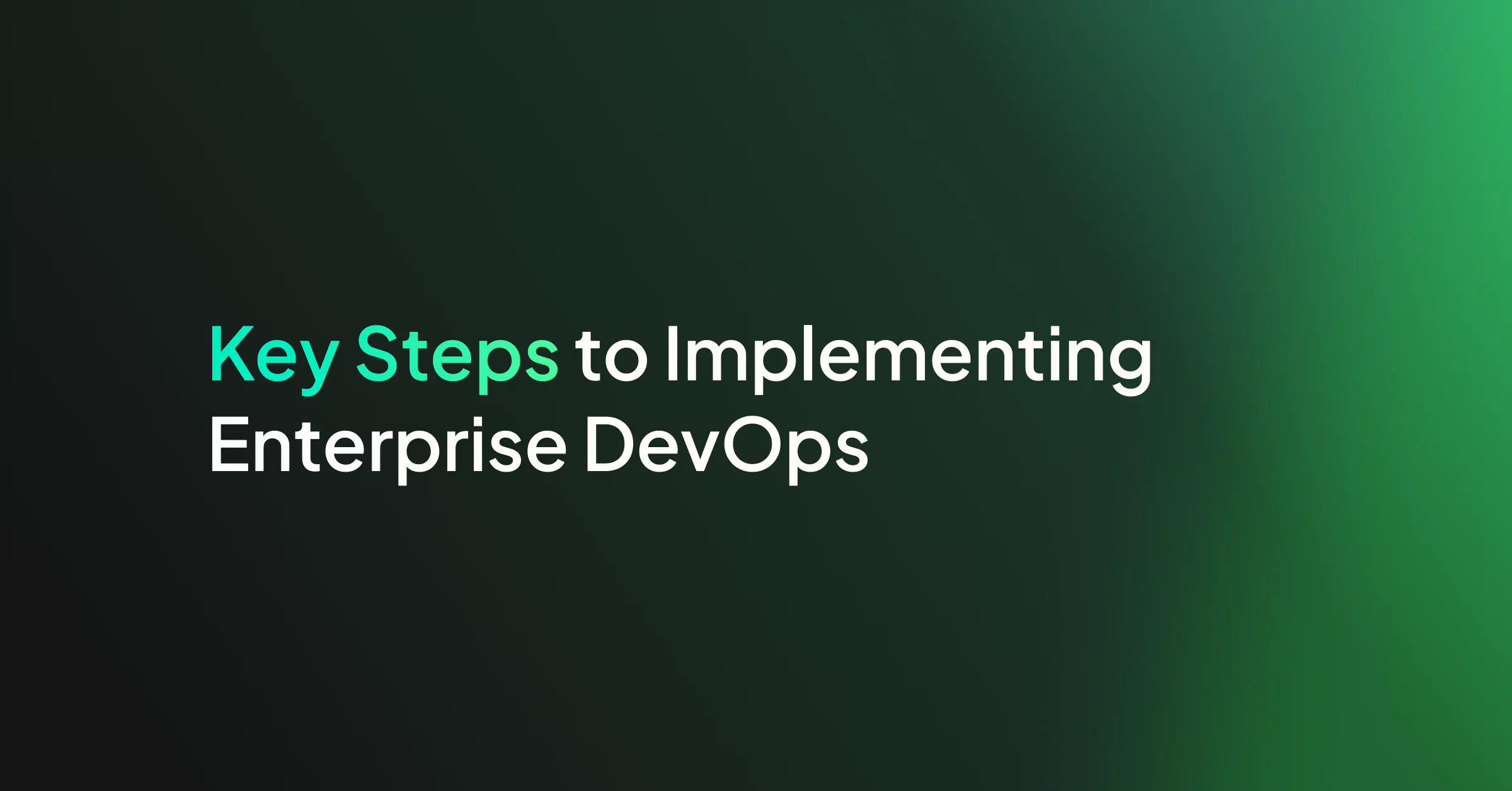Key Steps to Implementing Enterprise DevOps

Whether your team is currently using an Agile approach to manage its enterprise monitoring software development or has yet to institute a formal project management system, implementing enterprise DevOps solutions is a necessary step to take if maximizing the efficiency of your operations and development teams is a priority for your organization.
Knowing where to begin, however, can be a challenge.
This is particularly true when it comes to implementing major organizational changes in the enterprise environment. To help you get started, here are the key steps your organization needs to take to take the leap towards becoming a ‘DevOps shop’.
Essential components for implementing enterprise DevOps
Core to these is provisioning tools, at all levels of the IT stack, to support the modular deployment of software to the production environment. DevOps builds on Agile’s central tenant of encouraging the quick deployment of modular development iterations, but places its central emphasis on removing constraints between the development and system administration/operations functions.
Matching the development and production build environments and ensuring that they operate cohesively rather than as silos allows for the continual updating of the code-base with far greater efficiency than would be possible if the philosophy were not implemented. Ensuring this, however, relies largely on streamlined workflows and automated processes, such as those designed by popular tools such as Puppet and Chef, being instituted between the two teams.
Some essential tools from the extensive DevOps landscape that should form part of this effort include infrastructure monitoring tools, such as Nagios, a log analytics platform, and automation servers such as Jenkins.
Ensure buy-in
Ensuring buy-in among the technical team, from CIO level downwards, is critical to ensure that the transition to a continuous delivery is a successful one.
Coordination must take place not only between development and operations (the latter is often concerned that the process will simply result in more buggy code being passed on to them), but also between the technical team and other business functions such as management and executive leadership.
Through providing for the continuous delivery of updates, DevOps should ensure the speedy adaptability and pivot-ability of the software being developed. The changes being queued for implementation can be driven, and re-prioritized, by everybody from senior management to the customer success team. It’s important to have the entire organization at least aware of what the new philosophy means in practical terms for the product’s life-cycle and evolution.
Commit for the long haul
Achieving DevOps is a long term process. Although certain metrics and KPIs can be monitored, assessing progress towards a full or at least satisfactory implementation of the philosophy takes time to measure and achieve.
Setting expectations on both the development and operations teams ahead of the initiation of the process is also fundamental to preempting any surprises that may arise as the teams move towards working in closer unison and aligning their work practices.
Operations team-members will have to provide developers with frequent updates as to how their code is performing under real-world operating conditions as encountered by end users.
Developers, in turn, will have to pay closer attention to how their output will function in a Cloud-based, distributed environment. Certain skills, such as logging analyzing log data, may for the first time become a shared concern.
Implementing DevOps change management methodologies is a significant undertaking that requires making extensive changes to an organization’s development structure. Executed correctly, however, the benefits of embracing this new way of performing version delivery are impossible to deny and result in significantly improved delivery of updated software to end-users.




